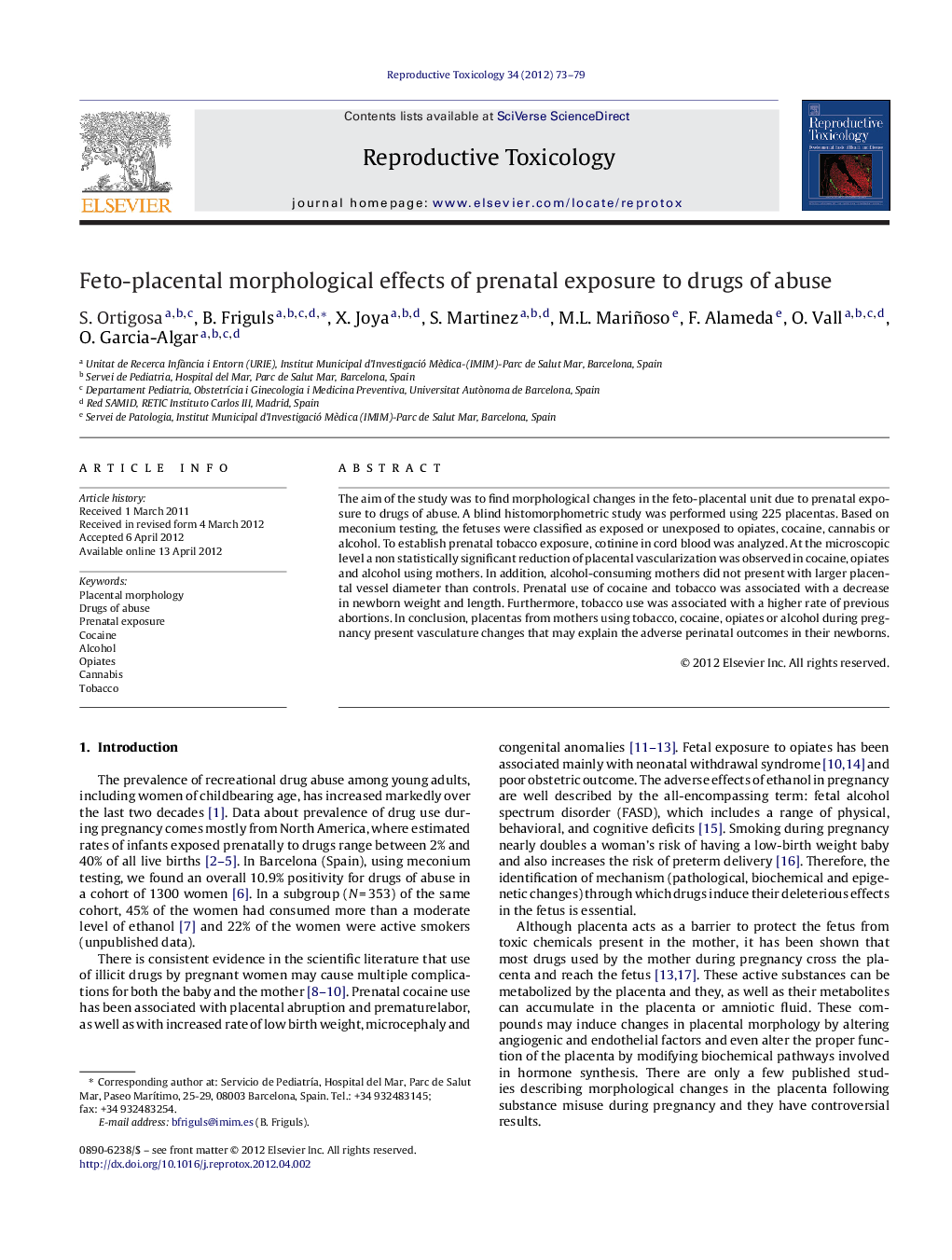| Article ID | Journal | Published Year | Pages | File Type |
|---|---|---|---|---|
| 2593755 | Reproductive Toxicology | 2012 | 7 Pages |
The aim of the study was to find morphological changes in the feto-placental unit due to prenatal exposure to drugs of abuse. A blind histomorphometric study was performed using 225 placentas. Based on meconium testing, the fetuses were classified as exposed or unexposed to opiates, cocaine, cannabis or alcohol. To establish prenatal tobacco exposure, cotinine in cord blood was analyzed. At the microscopic level a non statistically significant reduction of placental vascularization was observed in cocaine, opiates and alcohol using mothers. In addition, alcohol-consuming mothers did not present with larger placental vessel diameter than controls. Prenatal use of cocaine and tobacco was associated with a decrease in newborn weight and length. Furthermore, tobacco use was associated with a higher rate of previous abortions. In conclusion, placentas from mothers using tobacco, cocaine, opiates or alcohol during pregnancy present vasculature changes that may explain the adverse perinatal outcomes in their newborns.
► We study morphological changes in the feto-placental unit due to prenatal exposure to drugs of abuse. ► A placental vascularization reduction was observed in cocaine, opiates and alcohol using mothers. ► Alcohol-consuming mothers presented with larger placental vessel diameter than controls. ► Prenatal use of drugs of abuse was associated with a decrease in newborn weight and length. ► Vasculature changes in these placentas may explain the adverse perinatal outcomes in newborns.
